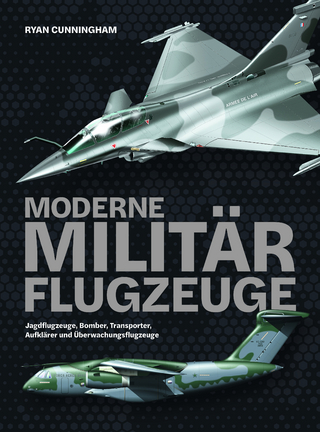
Pioneering Places of British Aviation
Seiten
2024
Air World (Verlag)
978-1-3990-2126-5 (ISBN)
Air World (Verlag)
978-1-3990-2126-5 (ISBN)
From as early as the beginning of the nineteenth century, Britain was at the forefront of powered flight. Across the country many places became centres of innovation and experimentation, as increasing numbers of daring men took to the skies.
It was in 1799, at Brompton Hall in Yorkshire, that Sir George Cayley Bart put forward ideas which formed the basis of powered flight. Cayley is widely regarded as the father of aviation and his ancestral home the ‘cradle’ of British aviation.
There were balloon flights at Hendon from 1862, although attempts at powered flights from the area later used as the famous airfield, do not seem to have been particularly successful. Despite this, Louis Blériot established a flying school there in 1910.
It was gliders that Percy Pilcher flew from the grounds of Stamford Hall in Leicestershire during the 1890s. He was killed in a crash there in 1899, but Pilcher had plans for a powered aircraft which experts believe may well have enabled him to beat the Wright Brothers in becoming the first to make a fixed-wing powered flight.
At Brooklands in Surrey attempts were made to build and fly a powered aircraft in 1906, even before the site’s famous banked racetrack was completed, but these were unsuccessful. Then on 8 June 1908, A.V. Roe made what is considered to be the first powered flight in Britain from there – in reality a short hop – in a machine of his own design and construction, enabling Brooklands to claim to be the birthplace of British aviation.
These are just a few of the many places investigated by Bruce Hales-Dutton in this intriguing look at the early days of British aviation. The sites explored include the first ever aircraft factory in Britain, in the railway arches at Battersea; Larkhill on Salisbury Plain, which became the British Army’s first airfield; and Barking Creek, where Frederick Handley Page established his first factory.
It was in 1799, at Brompton Hall in Yorkshire, that Sir George Cayley Bart put forward ideas which formed the basis of powered flight. Cayley is widely regarded as the father of aviation and his ancestral home the ‘cradle’ of British aviation.
There were balloon flights at Hendon from 1862, although attempts at powered flights from the area later used as the famous airfield, do not seem to have been particularly successful. Despite this, Louis Blériot established a flying school there in 1910.
It was gliders that Percy Pilcher flew from the grounds of Stamford Hall in Leicestershire during the 1890s. He was killed in a crash there in 1899, but Pilcher had plans for a powered aircraft which experts believe may well have enabled him to beat the Wright Brothers in becoming the first to make a fixed-wing powered flight.
At Brooklands in Surrey attempts were made to build and fly a powered aircraft in 1906, even before the site’s famous banked racetrack was completed, but these were unsuccessful. Then on 8 June 1908, A.V. Roe made what is considered to be the first powered flight in Britain from there – in reality a short hop – in a machine of his own design and construction, enabling Brooklands to claim to be the birthplace of British aviation.
These are just a few of the many places investigated by Bruce Hales-Dutton in this intriguing look at the early days of British aviation. The sites explored include the first ever aircraft factory in Britain, in the railway arches at Battersea; Larkhill on Salisbury Plain, which became the British Army’s first airfield; and Barking Creek, where Frederick Handley Page established his first factory.
Newspaper and magazine journalist, government press officer and aviation industry public relations specialist, BRUCE HALES-DUTTON’s professional career encompassed all of these. He worked for the government department responsible for the aviation industry, a major international airports group and a highly-respected supplier of air traffic control services as well as Britain’s aviation industry regulator. During this time, he wrote texts for articles, news releases, brochures and leaflets, scripts for video programmes and speeches. Bruce was a member of the Royal Aeronautical Society and for many years a volunteer steward at Brooklands Museum. He passed away in November 2022.
| Erscheinungsdatum | 13.04.2024 |
|---|---|
| Verlagsort | Barnsley |
| Sprache | englisch |
| Maße | 156 x 234 mm |
| Themenwelt | Natur / Technik ► Fahrzeuge / Flugzeuge / Schiffe ► Luftfahrt / Raumfahrt |
| Technik ► Fahrzeugbau / Schiffbau | |
| Technik ► Luft- / Raumfahrttechnik | |
| ISBN-10 | 1-3990-2126-5 / 1399021265 |
| ISBN-13 | 978-1-3990-2126-5 / 9781399021265 |
| Zustand | Neuware |
| Informationen gemäß Produktsicherheitsverordnung (GPSR) | |
| Haben Sie eine Frage zum Produkt? |
Mehr entdecken
aus dem Bereich
aus dem Bereich
das Grundwissen zur Privatpilotenlizenz
Buch | Hardcover (2024)
Motorbuch Verlag
CHF 55,90
Jagdflugzeuge, Bomber, Transporter, Aufklärer und …
Buch | Hardcover (2023)
Wieland Verlag
CHF 41,85


